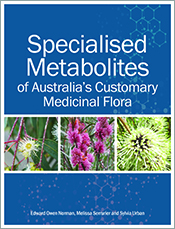News
This title is no longer available in print. The eBook edition is still available; see links at the top of this page.
Reviews
"Lavishly presented with illustrations on almost every page, this book provides a fascinating insight into a lively place remote from most people's experience of the Australian continent."
Richard J. Martin, Historical Records of Australian Science, pp.342, 2013
"It is a journey to another country that will fill you with wonder."
Aboriginal Art & Culture Blog, May 2013
"By combining artistic, scientific, and Indigenous views, Desert Lake provides a smorgasbord of colour, culture, information, and insight."
Cathie Clement, Boab Bulletin, pp. 5, April 2013
"Mixing Aboriginal screenprints, poetry, archaeological findings and scientific discourse, this is a truly unique coffee table book about the land and life around Lake Gregory (Paruku) in the Kimberley... its method of interweaving the first-person tales of visiting scientists and long-term residents forces you to think about the Aboriginal-European cultural interface in an enjoyable way... Academics will enjoy the extensive footnotes but, for me, it's the collection of colourful canvas maps and personal revelations of the researchers that impresses."
Wild, pp. 73, July-August 2013
"Visually the book is a delight: the Aboriginal paintings and landscape photographs in particular seem
to leap from the page. What also emerges is the value of a collaborative approach, and the way that the landscape itself (like the Aboriginal paintings) can be seen to hold many layers of meaning. The interpretations of Indigenous custodians and scientists are not always compatible; however, Desert Lake
combines them in a way which is always respectful and sometimes surprisingly complementary." For anyone who enjoyed Yiwarra Kuju, and anyone interested in the interaction of science and traditional cultures, this book is a must.
Scott Mitchell, Explore, Vol 35(2), p. 26, 2013
"Desert Lake is a triumph of cross-cultural work, both in the activities that it describes and in the making of the book itself. And it is a work of remarkable beauty in its lavish photography of the region’s natural wonders, and in the reproductions of masterful artworks created by the Walmajarri, by kartiya artists, and by the two groups working on often astonishing collaborations that combine aesthetic excellence, narrative, poetry, and scientific observation."
Aboriginal Art and Culture: An American Eye, May 12 2013, http://aboriginalartandculture.wordpress.com/2013/05/12/the-lake-where-cultures-meet
"As a thoughtful compilation of many voices, it succeeds. And as a companion for future generations, I wager it will also succeed. For it feels rich and generous and full of good spirit"
Sally Dixon, Aboriginal History - Volume thirty seven, 2013
The photographs and reproductions of the artworks are excellent, and Native terms are fully explicated. These various genres combine to provide a living portrait of a total natural and social ecology. This will be a very useful volume for ecology, anthropology, and art collections.
D. S. Azzolina, Choice, December 2013 Vol. 51 No. 04
Details
ePDF | March 2013
ISBN: 9780643108387
Publisher: CSIRO Publishing
Available from
eRetailers
ePUB | March 2013
ISBN: 9780643108394
Publisher: CSIRO Publishing
Available from
eRetailers
Features
- Bringing Indigenous knowledge, art and science together to develop a greater appreciation and sharing of values between Indigenous and non-Indigenous people
- Working with Walmajarri people and writing about their public knowledge in a collaborative and culturally-sensitive manner
- Using innovative visual representations to highlight the new ways of 'seeing' that are often necessary precursors to new kinds of knowing in science, policy and other realms, taking a cue from the strong Aboriginal tradition of visual art as a medium of communication
- Provides a collaborative model of cross-cultural and cross-disciplinary partnerships that may well provide a template for future environmental projects
Contents
List of contributors
Biographies
Map of Paruku
Acknowledgements
Welcome
Introduction
Part 1: Deep time
Chapter 1: Everything comes back to here
Chapter 2: Earth science in traditional lands: bridge or barrier?
Part 2: Recent times
Chapter 3: A Lake in time: histories of Paruku
Chapter 4: Mulan story
Chapter 5: Water of life
Chapter 6: The living world
Chapter 7: We have come to the shores: an artist’s diary
Chapter 8: The shape of the Lake
Chapter 9: Thinking about painting
Part 3: The future
Chapter 10: A strong community for the future
Glossary of Walmajarri words
Partners
Desert Lake. Art, Science and Stories from Paruku Folio and DVD
Index
View the full table of contents.
Authors
Scientific editor,
Steve Morton, an ecologist, has undertaken most of his work in the Australian deserts. He is Honorary Fellow, CSIRO Ecosystem Sciences.
Mandy Martin is an internationally renowned artist. Desert Lake is her third major collaborative project in the Australian deserts incorporating art, science and story. She is an Artist and Adjunct Professor, Fenner School of Environment and Society, Australian National University.
Writer and artist, Kim Mahood, grew up on Tanami Downs Station to the east of Paruku, and has strong connections with Walmajarri people, some of whom worked for her family. Kim has worked as Liaison Officer for the Paruku Indigenous Protected Area.
John Carty’s expertise in anthropology and Aboriginal art has arisen from years of work in the Western Desert, Pilbara and Kimberley. He is a Doctoral Candidate, Research School of Humanities, Australian National University.








